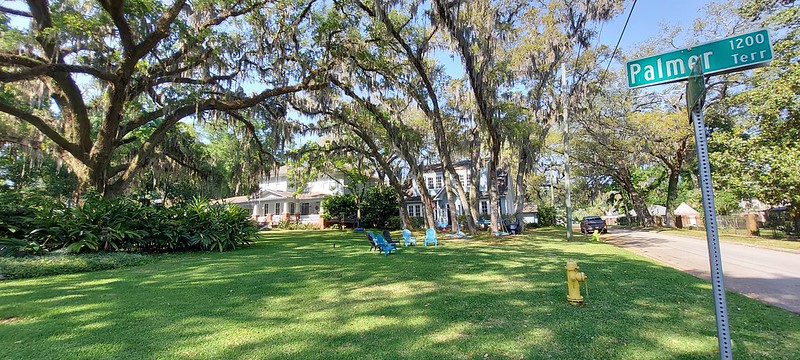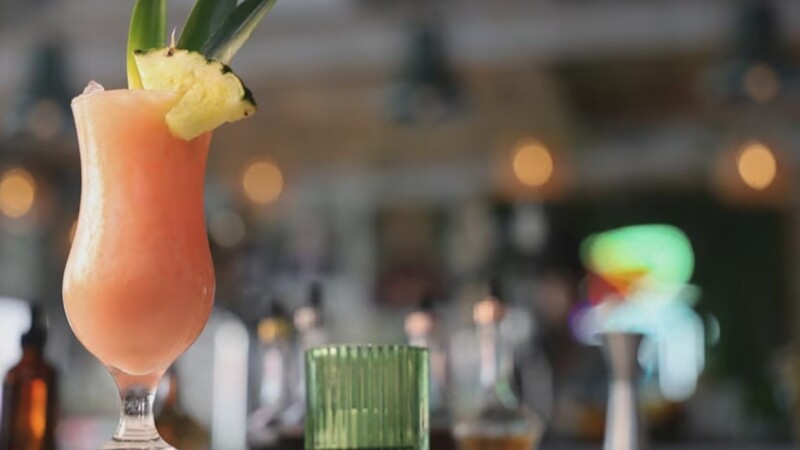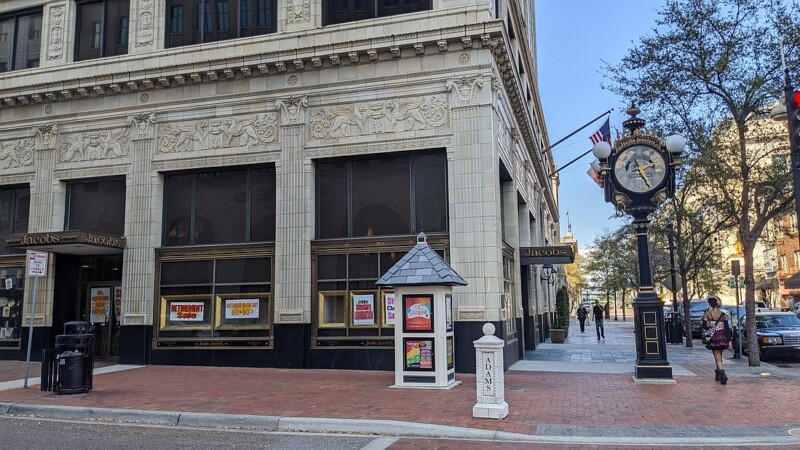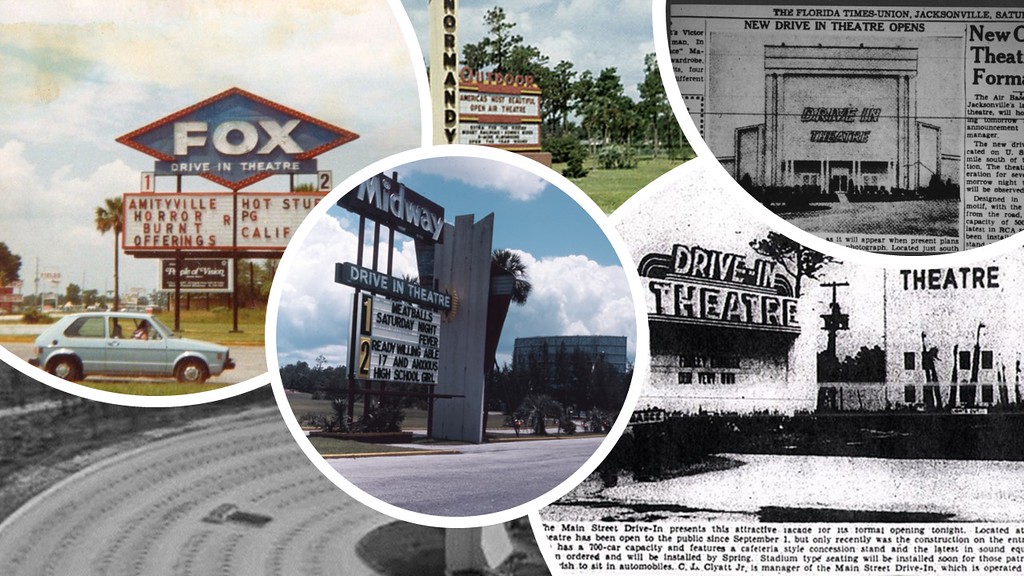
A virtual tour of one of Jacksonville’s oldest urban neighborhoods: St. Nicholas.
St. Nicholas History

Located across the river from Downtown, the neighborhood of St. Nicholas is one of the oldest settled communities in Duval County. In the vicinity of a narrow crossing point called “Pass de San Nicolas” by the Spanish and “Cow Ford” by the British, the area was once the home of an 18th century Spanish fortification known as Fort San Nicolas. While the fort was abandoned in 1817, the area became known as St. Nicholas, the Anglicized version of San Nicolas. For much of the 19th century, the area was occupied by plantations owned by Francis Bagley and Reuben Hogans.

Over the decades, Bagley’s land on the west side of Miller’s Creek was divided up among his descendants. St. Nicholas remained sparsely populated until the early 20th century. Significant growth took place as Jacksonville’s population expanded outward during the 1930s and 40s. By the 1960s, St. Nicholas was largely developed and built out.

Once considered to be on the edge of town, St. Nicholas represents a piece of the urban core that happens to pre-date much of the city as a whole. Here are eight historic sites of interest in the neighborhood of St. Nicholas.

Historic St. Nicholas Cemetery

Located at the intersection of Olive and Linden streets, the Historic St. Nicholas Cemetery served as a burial ground for the neighborhood’s early settlers. Home to nearly 300 burials, the 1.1-acre cemetery dates back to the mid-19th century. The headstones of William Darius Ferris, Sr. and William P. Goodman, the oldest remaining headstones in the cemetery, date back to 1849.
Jacksonville’s second oldest barbecue joint

In business for 75 years, Bono’s is Jacksonville’s second-longest continuously operating barbecue restaurant. The first Bono’s was established by Lou Bono in 1949, near the intersection of Kings Avenue and Atlantic Boulevard. Lou’s vision was to cook meat the “traditional” way—in a specifically designed pit, over wood, with a pit master standing watch. Making room for the construction of Interstate 95, Bono’s relocated a few miles east to 4970 Beach Blvd. Bono’s continues to have success under the careful watch of the Adeeb family. Over the decades, Bono’s has grown from a St. Nicholas operation to a large enterprise with 19 locations in Florida and Colorado.
Bishop Kenny High School was a Spanish fortress and WWI-era shipyard

During World War I, due to the government’s major priority of building ships to transport troops overseas, Jacksonville’s Merrill-Stevens Shipbuilding Co. was awarded large contracts to assist in the war effort. To meet those needs, Merrill-Stevens developed a South Jacksonville shipyard along Atlantic Boulevard, just west of St. Nicholas.
In 1952, under the leadership of Archbishop Joseph P. Hurley, three Catholic high schools were consolidated to form one diocesan high school. Then owned by the Diocese of St. Augustine, the former shipyard site became the location of the new school.
Initially known as Central Catholic High School, the school was re-dedicated a year later in honor of Bishop William J. Kenny. While most of the of the shipyard buildings no longer remain, the former Merrill-Stevens Administration building, facing Atlantic Boulevard, is a visual link of an era gone bye.
Midtown Centre Office Park

St. Nicholas’ Midtown Centre was the first suburban office park built in the U.S. The developer, Ira McKissick Koger (1912-2004), is credited with creating the office park concept in the mid-1950s. Koger envisioned an alternative to Jacksonville’s congested Downtown high-rise offices. He believed businesses would prefer the suburbs, with their easy access to highways and ample free surface parking.
Koger opened his Kroger Center office complex on the edge of St. Nicholas in 1957. The office park proved to be very popular and highly successful. As Koger expanded the suburban office concept to other communities, other developers took note and did the same. Koger Properties eventually developed 350 buildings in 36 office parks across the country by the time it collapsed under heavy debt load, filing for Chapter 11 protection in 1991.
In 1999, Koger Equity Inc. sold the pioneering office park to Lennar Partners of Miami as a part of a plan to get rid of older properties. At the time of the sale, Jacksonville-based Koger Equity had 263 office buildings operating or under construction in 15 cities throughout the country.
Now known as the Midtown Centre, the nation’s first suburban office complex has 31 buildings comprising 762,993 square feet.
Palmer Terrace

While most of the St. Nicholas landscape is dominated by 20th century development, Palmer Terrace is a street that is home to some of the oldest residential dwellings near Downtown. Once located across the river from the city of Jacksonville, several structures, including the former Loula Clifton Residence built in 1886, were constructed during the 1880s. A majority of these residential dwellings were built for the descendants of individuals who were provided Spanish land grants during the early 19th century.
St. Nicholas Playground

Originally named Spring Park, St. Nicholas Playground is the largest public park in St. Nicholas. The park was created during the late 1930s, following city of Jacksonville land purchases in 1936 and 1937. A popular location for mid-20th century baseball leagues, the park was developed to meet the growing needs of the Southside as Duval County’s population began to grow on the outskirts of Jacksonville’s city limits.
St. Nicholas Town Center

Situated around the intersection of Atlantic and Beach boulevards, the St. Nicholas Town Center was developed after World War II to meet the growing needs of the surrounding community. Largely developed between 1949 and 1957, the walkable commercial district was anchored by the Southgate Plaza shopping center. The 149,042-square-foot shopping center was razed in 2022 and replaced by a 294-unit apartment complex. Today, the St. Nicholas Town Center is a small shopping district home to longtime and new small businesses including Mudville Grille, Curry-Thomas Hardware, Mariano’s Custom Tailor, Havana Jax Cafe, Cuba Libre Ultra Lounge, The Hungry Caterpillar and Blueberry Artisan Bakery & Cafe.
St. Nicholas Train Station

The St. Nicholas Station was built after the Florida East Coast Railway took over the railroad line between the beaches and the city of South Jacksonville in 1899. It was originally located on Linden Avenue. Noted anthropologist Zora Neale Hurston, a frequent traveler to the St. Nicholas Station, visited the area often to visit the family of her lifelong best friend, Gerda King. The passenger rail station served St. Nicholas until the FEC ceased operations in 1932. Eventually, the county bought the old railroad right of way to build Beach Boulevard. In 2004, the old depot that Zora Neale Hurston once used was restored and relocated to St. Nicholas Train Station Park by the St. Nicholas Business Association.






